Mast cells regulate myofilament calcium sensitization and heart function after myocardial infarction
- PMID: 27353089
- PMCID: PMC4925026
- DOI: 10.1084/jem.20160081
Mast cells regulate myofilament calcium sensitization and heart function after myocardial infarction
Abstract
Acute myocardial infarction (MI) is a severe ischemic disease responsible for heart failure and sudden death. Inflammatory cells orchestrate postischemic cardiac remodeling after MI. Studies using mice with defective mast/stem cell growth factor receptor c-Kit have suggested key roles for mast cells (MCs) in postischemic cardiac remodeling. Because c-Kit mutations affect multiple cell types of both immune and nonimmune origin, we addressed the impact of MCs on cardiac function after MI, using the c-Kit-independent MC-deficient (Cpa3(Cre/+)) mice. In response to MI, MC progenitors originated primarily from white adipose tissue, infiltrated the heart, and differentiated into mature MCs. MC deficiency led to reduced postischemic cardiac function and depressed cardiomyocyte contractility caused by myofilament Ca(2+) desensitization. This effect correlated with increased protein kinase A (PKA) activity and hyperphosphorylation of its targets, troponin I and myosin-binding protein C. MC-specific tryptase was identified to regulate PKA activity in cardiomyocytes via protease-activated receptor 2 proteolysis. This work reveals a novel function for cardiac MCs modulating cardiomyocyte contractility via alteration of PKA-regulated force-Ca(2+) interactions in response to MI. Identification of this MC-cardiomyocyte cross-talk provides new insights on the cellular and molecular mechanisms regulating the cardiac contractile machinery and a novel platform for therapeutically addressable regulators.
©2016 Ngkelo et al.
Figures

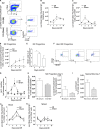
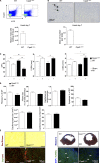

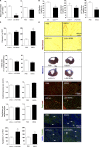
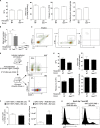
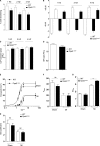
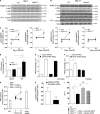

Similar articles
-
The cardiac repair benefits of inflammation do not persist: evidence from mast cell implantation.J Cell Mol Med. 2015 Dec;19(12):2751-62. doi: 10.1111/jcmm.12703. Epub 2015 Oct 16. J Cell Mol Med. 2015. PMID: 26471858 Free PMC article.
-
Myofilament calcium de-sensitization and contractile uncoupling prevent pause-triggered ventricular tachycardia in mouse hearts with chronic myocardial infarction.J Mol Cell Cardiol. 2013 Jul;60:8-15. doi: 10.1016/j.yjmcc.2013.03.022. Epub 2013 Apr 6. J Mol Cell Cardiol. 2013. PMID: 23570978 Free PMC article.
-
Thin filament incorporation of an engineered cardiac troponin C variant (L48Q) enhances contractility in intact cardiomyocytes from healthy and infarcted hearts.J Mol Cell Cardiol. 2014 Jul;72:219-27. doi: 10.1016/j.yjmcc.2014.03.015. Epub 2014 Mar 29. J Mol Cell Cardiol. 2014. PMID: 24690333 Free PMC article.
-
Cardiac cAMP-PKA Signaling Compartmentalization in Myocardial Infarction.Cells. 2021 Apr 16;10(4):922. doi: 10.3390/cells10040922. Cells. 2021. PMID: 33923648 Free PMC article. Review.
-
Revisiting the role of mast cells in autoimmunity.Autoimmun Rev. 2015 Sep;14(9):751-9. doi: 10.1016/j.autrev.2015.04.008. Epub 2015 Apr 23. Autoimmun Rev. 2015. PMID: 25913139 Review.
Cited by
-
Inflammation in Right Ventricular Failure: Does It Matter?Front Physiol. 2018 Aug 20;9:1056. doi: 10.3389/fphys.2018.01056. eCollection 2018. Front Physiol. 2018. PMID: 30177883 Free PMC article. Review.
-
Histamine-mediated autocrine signaling in mesenteric perilymphatic mast cells.Am J Physiol Regul Integr Comp Physiol. 2020 Mar 1;318(3):R590-R604. doi: 10.1152/ajpregu.00255.2019. Epub 2020 Jan 8. Am J Physiol Regul Integr Comp Physiol. 2020. PMID: 31913658 Free PMC article.
-
WGCNA combined with machine learning algorithms for analyzing key genes and immune cell infiltration in heart failure due to ischemic cardiomyopathy.Front Cardiovasc Med. 2023 Mar 17;10:1058834. doi: 10.3389/fcvm.2023.1058834. eCollection 2023. Front Cardiovasc Med. 2023. PMID: 37008314 Free PMC article.
-
Post-myocardial Infarction Cardiac Remodeling: Multidimensional Mechanisms and Clinical Prospects of Stem Cell Therapy.Stem Cell Rev Rep. 2025 Jun;21(5):1369-1427. doi: 10.1007/s12015-025-10888-7. Epub 2025 May 5. Stem Cell Rev Rep. 2025. PMID: 40323498 Free PMC article. Review.
-
Senescence mechanisms and targets in the heart.Cardiovasc Res. 2022 Mar 25;118(5):1173-1187. doi: 10.1093/cvr/cvab161. Cardiovasc Res. 2022. PMID: 33963378 Free PMC article. Review.
References
-
- Akers, I.A., Parsons M., Hill M.R., Hollenberg M.D., Sanjar S., Laurent G.J., and McAnulty R.J.. 2000. Mast cell tryptase stimulates human lung fibroblast proliferation via protease-activated receptor-2. Am. J. Physiol. Lung Cell. Mol. Physiol. 278:L193–L201. - PubMed
MeSH terms
Substances
Associated data
- Actions
Grants and funding
LinkOut - more resources
Full Text Sources
Other Literature Sources
Medical
Molecular Biology Databases
Miscellaneous

